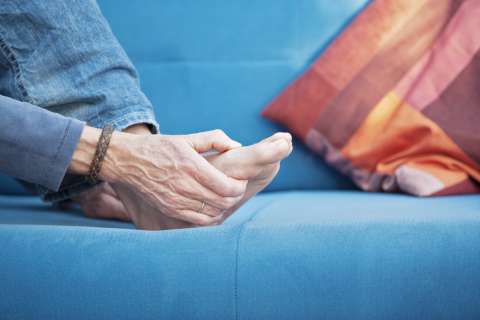Dear Doctors: I am an adult woman, and I have an umbilical hernia. I want to decrease the amount of belly fat that I have. What kinds of exercises are safe to do when you have an umbilical hernia?
Dear Reader: A hernia is a gap in a muscle wall that allows tissues from one part of the body to push through and enter a space where they do not belong. The most common type of hernia occurs in the abdominal area. However, it is also possible for a hernia to develop in the diaphragm, the groin and in a surgical scar.
When someone has an umbilical hernia, it means the breach in the abdominal muscle has developed near the navel. This allows the fatty tissues within the abdomen, or the bowel itself, to protrude. Depending on its severity, an umbilical hernia may be barely visible, or it may look like a knob or a blob of tissue. It can vanish completely when lying down and can become larger in response to internal pressure, as when laughing, lifting or having a bowel movement.
Although umbilical hernias occur most often in newborns and infants, they are seen in adults as well. In about 10% of adult cases, the umbilical hernia has been present since birth. But the majority are the result of injury. Common causes of umbilical hernia in adults include the increased pressure on the abdominal wall that occurs during pregnancy, labor and delivery, or from physical activity that entails straining or heavy lifting.
It is not clear from your letter if your umbilical hernia is mild or severe, when it developed and if you have been evaluated by a medical professional. If you have not, it is very important to do so. Not all hernias will require an immediate surgical repair. Some, if they are small and do not cause symptoms, can be monitored and temporarily managed with lifestyle changes. However, this is an injury to the abdominal wall that can quickly and easily grow more severe. It is also possible for the tissues of the hernia to become trapped within the abdominal wall. If blood flow gets cut off -- this is called a strangulated hernia -- the trapped tissues can die and cause a life-threatening infection.
In theory, it is possible to exercise safely if you are living with a hernia that is small and does not cause any symptoms. But with each and every movement, you will be taking the risk of making the hernia worse. If your doctor evaluates your hernia and clears you to exercise, you will be instructed not to do anything that involves lifting weights, and not to engage in exercises that require pulling, pushing or any kind of straining. You will also be told to avoid all forms of contact sports. Even cycling, swimming and yoga can put pressure on the abdominal muscles.
Unfortunately, an umbilical hernia in an adult will not heal. It requires either a surgical repair or a lifetime of careful and watchful management.
(Send your questions to [email protected], or write: Ask the Doctors, c/o UCLA Health Sciences Media Relations, 10960 Wilshire Blvd., Suite 1955, Los Angeles, CA, 90024. Owing to the volume of mail, personal replies cannot be provided.)





